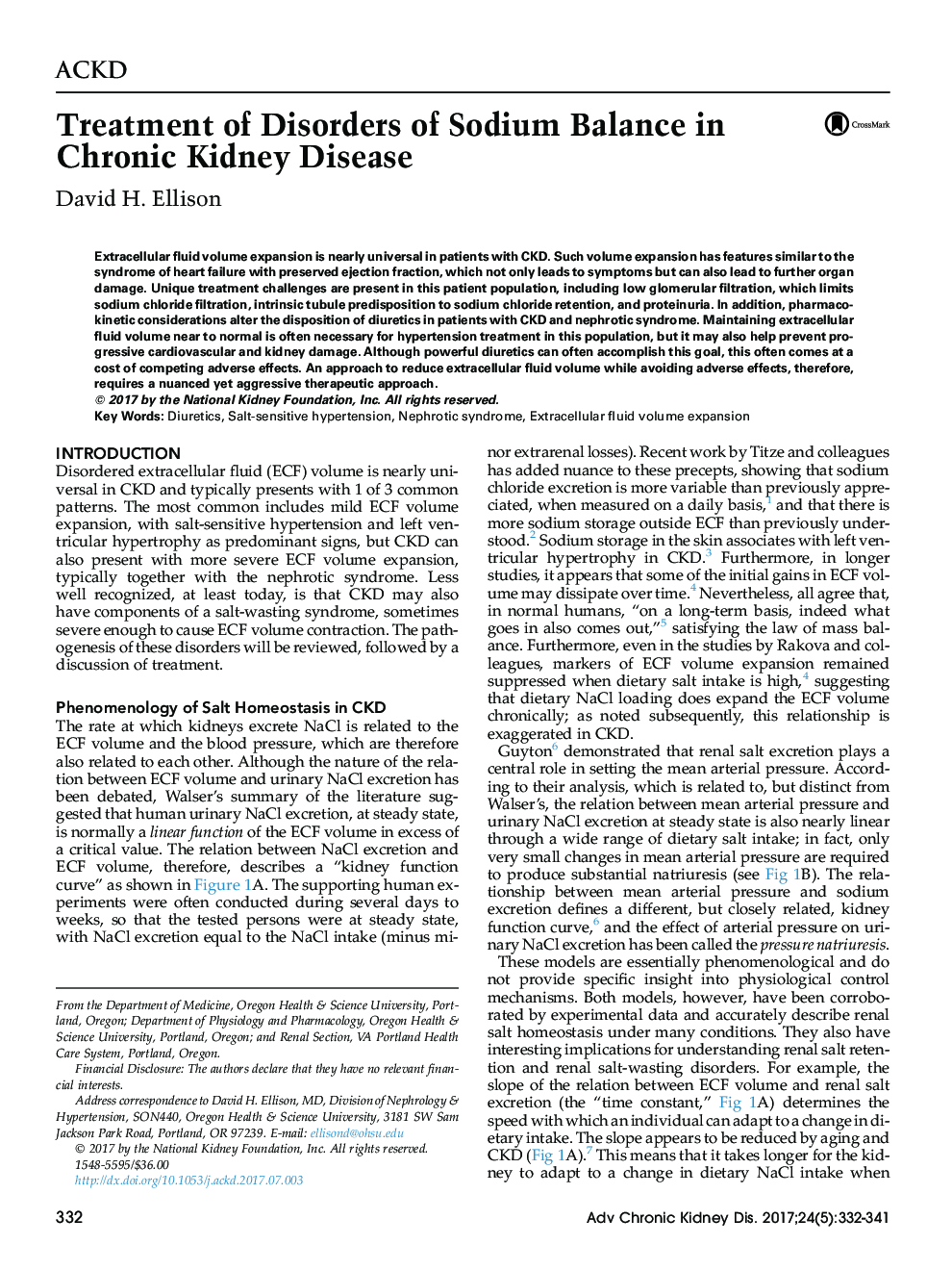| Article ID | Journal | Published Year | Pages | File Type |
|---|---|---|---|---|
| 5685172 | Advances in Chronic Kidney Disease | 2017 | 10 Pages |
Abstract
Extracellular fluid volume expansion is nearly universal in patients with CKD. Such volume expansion has features similar to the syndrome of heart failure with preserved ejection fraction, which not only leads to symptoms but can also lead to further organ damage. Unique treatment challenges are present in this patient population, including low glomerular filtration, which limits sodium chloride filtration, intrinsic tubule predisposition to sodium chloride retention, and proteinuria. In addition, pharmacokinetic considerations alter the disposition of diuretics in patients with CKD and nephrotic syndrome. Maintaining extracellular fluid volume near to normal is often necessary for hypertension treatment in this population, but it may also help prevent progressive cardiovascular and kidney damage. Although powerful diuretics can often accomplish this goal, this often comes at a cost of competing adverse effects. An approach to reduce extracellular fluid volume while avoiding adverse effects, therefore, requires a nuanced yet aggressive therapeutic approach.
Related Topics
Health Sciences
Medicine and Dentistry
Nephrology
Authors
David H. Ellison,
